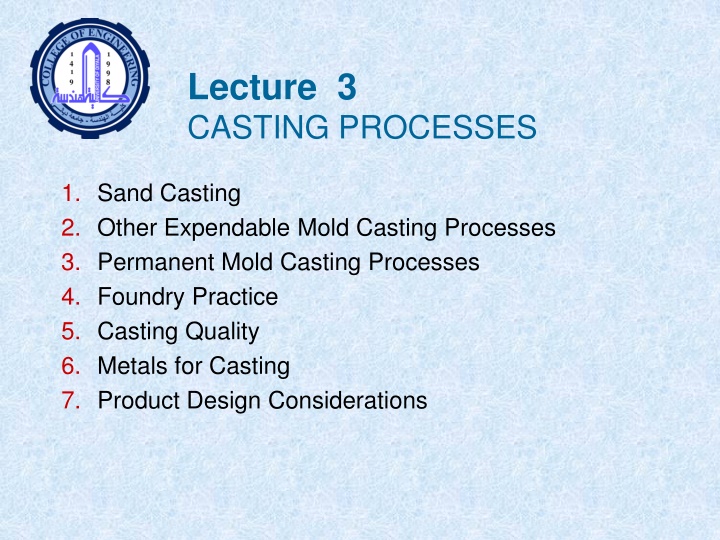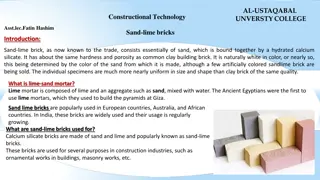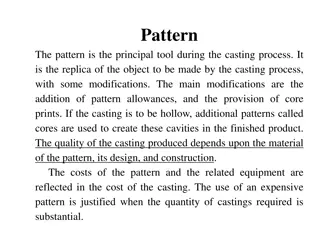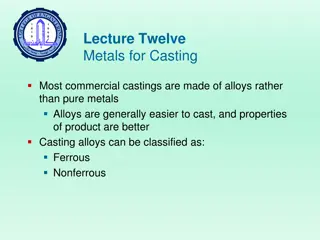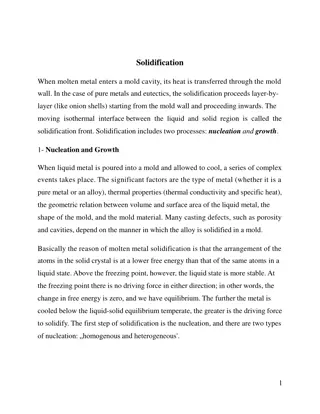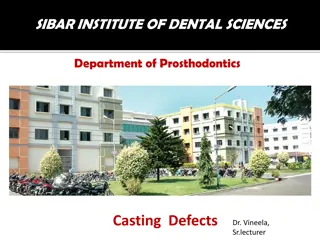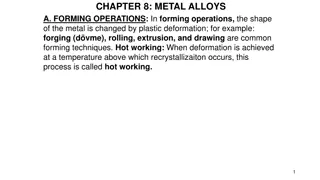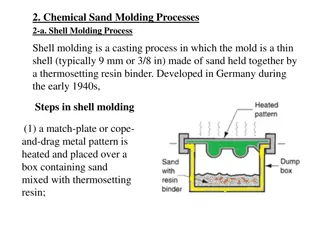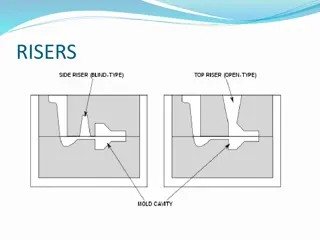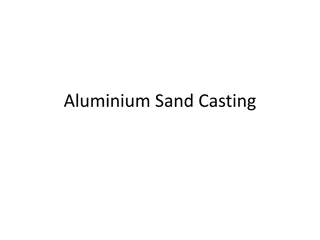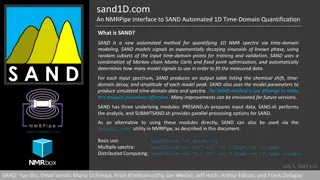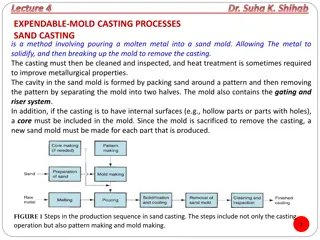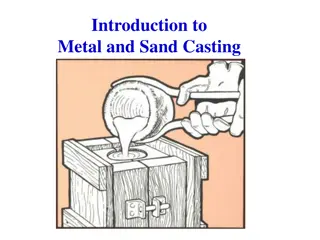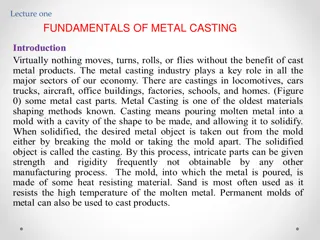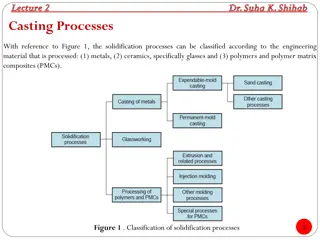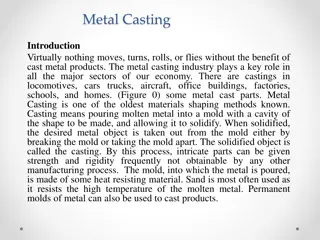Overview of Sand Casting Process
Sand casting is a widely used process to produce various metal parts by pouring molten metal into a sand mold. It allows for the creation of complex shapes and is suitable for a wide range of alloys. The process involves steps like mold-making, pouring the metal, solidification, mold removal, and post-casting treatments like heat treatment. Sand casting is versatile, cost-effective, and can cater to small to large-scale production needs efficiently.
Download Presentation

Please find below an Image/Link to download the presentation.
The content on the website is provided AS IS for your information and personal use only. It may not be sold, licensed, or shared on other websites without obtaining consent from the author.If you encounter any issues during the download, it is possible that the publisher has removed the file from their server.
You are allowed to download the files provided on this website for personal or commercial use, subject to the condition that they are used lawfully. All files are the property of their respective owners.
The content on the website is provided AS IS for your information and personal use only. It may not be sold, licensed, or shared on other websites without obtaining consent from the author.
E N D
Presentation Transcript
Lecture 3 CASTING PROCESSES 1. Sand Casting 2. Other Expendable Mold Casting Processes 3. Permanent Mold Casting Processes 4. Foundry Practice 5. Casting Quality 6. Metals for Casting 7. Product Design Considerations
Two Categories of Casting Processes 1. Expendable mold processes - mold is sacrificed to remove part Advantage: more complex shapes possible Disadvantage: production rates often limited by the time to make mold rather than casting itself 2. Permanent mold processes - mold is made of metal and can be used to make many castings Advantage: higher production rates Disadvantage: geometries are limited by the need to open the mold
Overview of Sand Casting Most widely used casting process, accounting for a significant majority of total tonnage cast Nearly all alloys can be sand casted, including metals with high melting temperatures, such as steel, nickel, and titanium Castings range in size from small to very large Production quantities from one to millions
Sand casting for an industrial pump. Holes and surfaces have been machined (courtesy of George E. Kane Manufacturing Technology Laboratory, Lehigh University)
Steps in Sand Casting 1. Pour the molten metal into sand mold 2. Allow time for metal to solidify 3. Break up the mold to remove casting 4. Clean and inspect casting Separate gating and riser system 5. Heat treatment of casting is sometimes required to improve metallurgical properties
Making the Sand Mold The cavity in the sand mold is formed by packing sand around a pattern, then separating the mold into two halves and removing the pattern The mold must also contain gating and riser system If casting is to have internal surfaces, a core must be included in mold A new sand mold must be made for each part produced
Sand Casting Production Sequence Production sequence in sand casting, including pattern-making and mold-making
The Pattern Full-sized model of the part, slightly enlarged to account for shrinkage and machining allowances in the casting Pattern materials: Wood - common material because it is easy to work, but it warps Metal - more expensive to fabricate, but lasts longer Plastic - compromise between wood and metal
Types of Patterns Types of patterns used in sand casting: (a) solid pattern, (b) split pattern, (c) match-plate pattern, (d) cope and drag pattern
Core Full-scale model of interior surfaces of part Inserted into mold cavity prior to pouring The molten metal flows and solidifies between the mold cavity and the core to form the casting's external and internal surfaces May require supports to hold it in position in the mold cavity during pouring, called chaplets
Core in Mold (a) Core held in place in the mold cavity by chaplets, (b) possible chaplet design, (c) casting
